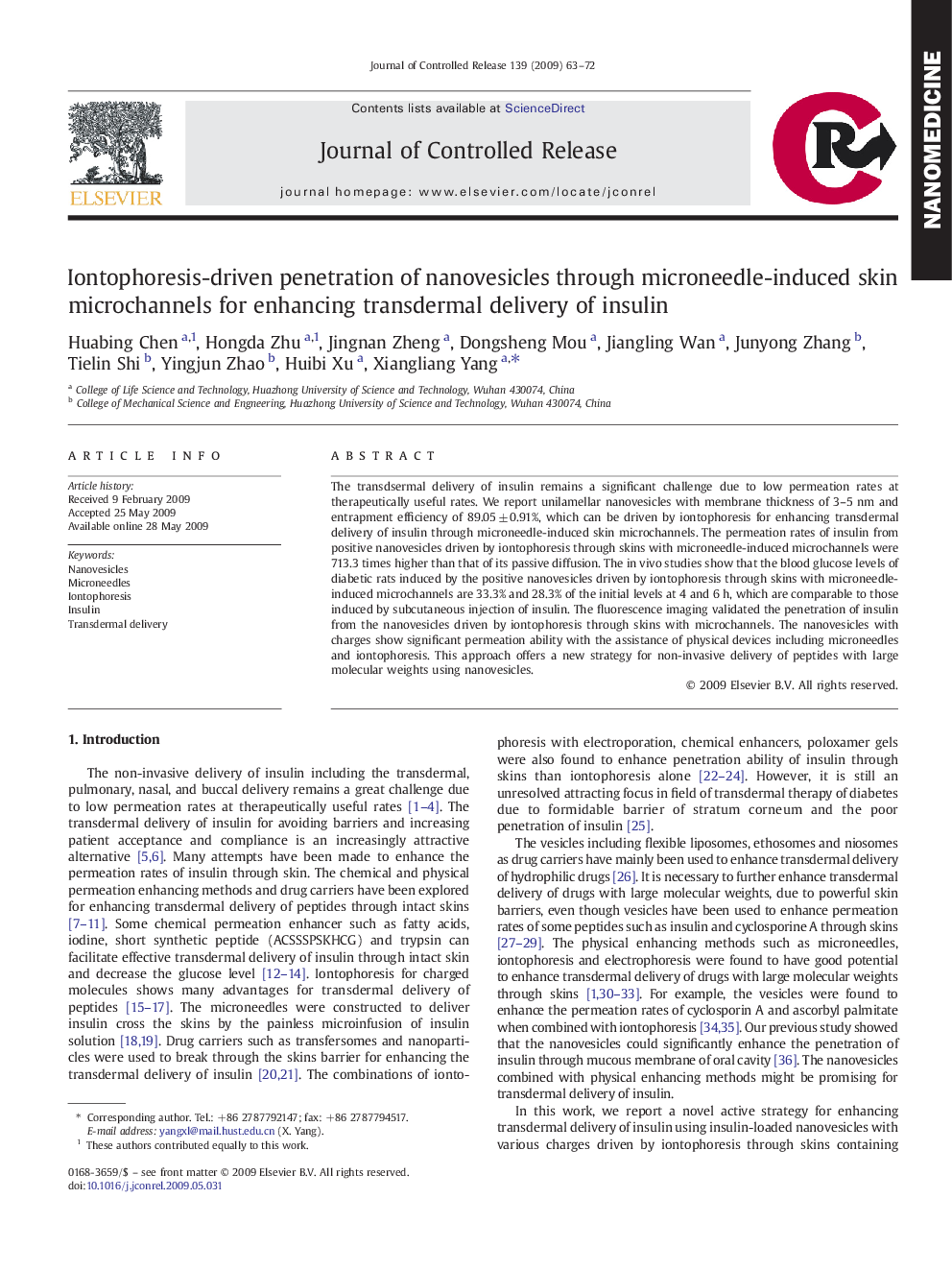| Article ID | Journal | Published Year | Pages | File Type |
|---|---|---|---|---|
| 1426165 | Journal of Controlled Release | 2009 | 10 Pages |
The transdsermal delivery of insulin remains a significant challenge due to low permeation rates at therapeutically useful rates. We report unilamellar nanovesicles with membrane thickness of 3–5 nm and entrapment efficiency of 89.05 ± 0.91%, which can be driven by iontophoresis for enhancing transdermal delivery of insulin through microneedle-induced skin microchannels. The permeation rates of insulin from positive nanovesicles driven by iontophoresis through skins with microneedle-induced microchannels were 713.3 times higher than that of its passive diffusion. The in vivo studies show that the blood glucose levels of diabetic rats induced by the positive nanovesicles driven by iontophoresis through skins with microneedle-induced microchannels are 33.3% and 28.3% of the initial levels at 4 and 6 h, which are comparable to those induced by subcutaneous injection of insulin. The fluorescence imaging validated the penetration of insulin from the nanovesicles driven by iontophoresis through skins with microchannels. The nanovesicles with charges show significant permeation ability with the assistance of physical devices including microneedles and iontophoresis. This approach offers a new strategy for non-invasive delivery of peptides with large molecular weights using nanovesicles.
Graphical abstractThe sketch of transdermal delivery of insulin by utilizing iontophoresis-driven penetration of nanovesicles through microneedle-induced microchannels of skins.Figure optionsDownload full-size imageDownload as PowerPoint slide
